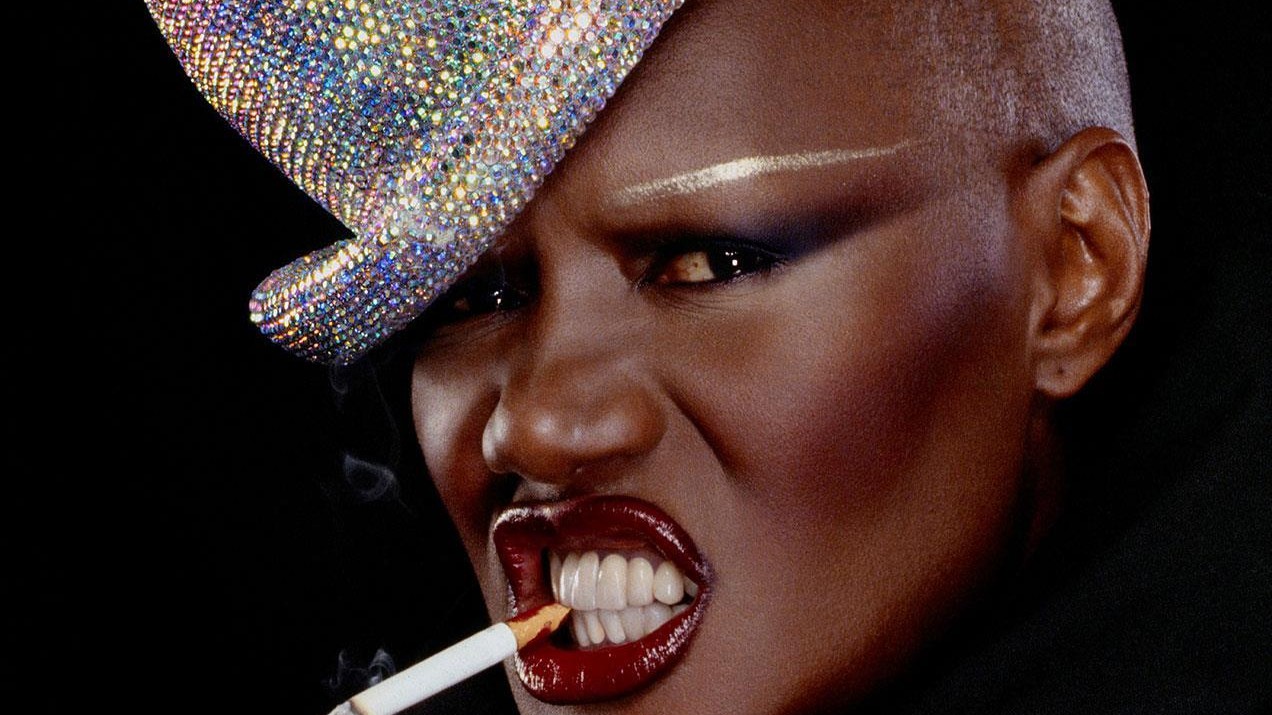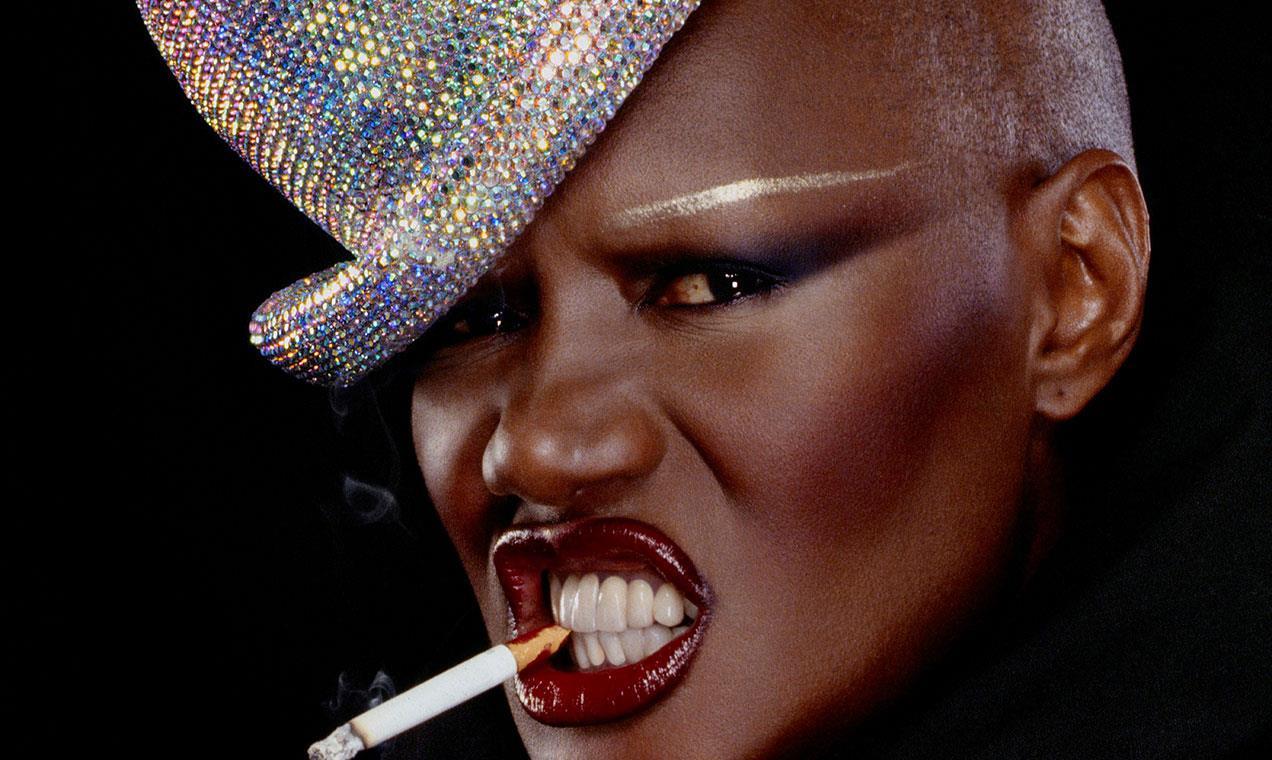In 2015, Grace Jones released a memoir called I’ll Never Write My Memoirs.
In it, along with proving that she is not one to be labeled “predictable”, Jones made the divisive claim that Beyonce, Miley Cyrus, Lady Gaga, and other pop stars are guilty of copying her style. This, of course, caused a social media firestorm among the generation that was too young to know ‘who this Grace Jones person’ was – how dare she insult Queen Bey! In the long-awaited and (apparently) much-needed re-introduction, director Sophie Fiennes gives audiences a rare look at this controversial, multi-hyphenated artist in the documentary-meets-art house film, Grace Jones: Bloodlight And Bami. The result is a product that may make millennials think twice before discrediting Jones as a self-proclaimed “Original”.
Filmed over a ten-year span and throughout various countries, Fiennes has created a quintessential profile piece with Bloodlight And Bami that explores Grace Jones far beyond her controversial statements and tabloid headlines. Through hotel room conversations, intimate family dinners, and private recording studio sessions, audiences see Jones as a mother, a church-goer, and a daughter, among other personal monikers. Most of the film takes place in Jamaica, Jones’ birthplace, and audiences are thrust into the center of her family dynamic. Perhaps the most revelatory fact is Jones’ admission of an abusive relationship with her step-father, and the lasting effect it had on her. Yet she also credits the man, who she calls Mas P, for inspiring her extremely masculine and ‘scary’ onstage persona.
Approach this film with an open mind and prepare for it to get blown away by the wildly wonderful Grace Jones.
Watching Grace’s creative process from early studio sessions to her live performances of “Slave To The Rhythm” and “Pull Up To The Bumper” are perhaps among the film’s most fascinating scenes. Like a true artist, she performs without inhibition (except when she thinks she looks like a lady pimp with call girls as backup dancers) and follows an ‘art over money’ philosophy that is inspiring to anyone pursuing creative dreams.
Much like Jones herself, Fiennes’ filmmaking style is a reflection of her innovation. This type of filmmaking includes using film that looks dated, including glitches and lags, and switches between more intimate, fly-on-the-wall moments to energetic live performances.
For as inclusionary as the film’s content tries to be, it seems like if one is not already a Grace Jones superfan or particularly interested in the 80s music scene, Bloodlight And Bami can feel exclusionary. No scene is particularly set up, leaving the audience to find themselves dropped into the middle of a moment without prior context, which can feel confusing and exacerbating during long takes. The take away is to go in without expecting this to be a straightforward documentary, as Bloodlight And Bami is not trying to be the next Amy. Approach this film with an open mind and prepare for it to get blown away by the wildly wonderful Grace Jones.
‘Grace Jones: Bloodlight And Bami’ is not rated. 115 minutes. Opening this Friday at the NuArt Theatre in Los Angeles with opening night Q&As for the 7:00 pm & 9:45 pm showings with Grace Jones and filmmaker Sophie Fiennes.
Morgan Rojas
Certified fresh. For disclosure purposes, Morgan currently runs PR at PRETTYBIRD and Ventureland.


